 Notion of the ecosystem and its components Notion of the ecosystem and ecosystems types
Notion of the ecosystem and its components Notion of the ecosystem and ecosystems types
 1. Natural 2. Terrestrial 3. Aquatic 4. Marine 5. Freshwater 6. Artificial
1. Natural 2. Terrestrial 3. Aquatic 4. Marine 5. Freshwater 6. Artificial
 Terrestrial ecosystem - A community of organisms and their environment that occurs on the land masses of continents and islands occupying 55,660,000 mi2 (144,150,000 km2), or 28.2%, of Earth's surface.
Terrestrial ecosystem - A community of organisms and their environment that occurs on the land masses of continents and islands occupying 55,660,000 mi2 (144,150,000 km2), or 28.2%, of Earth's surface.
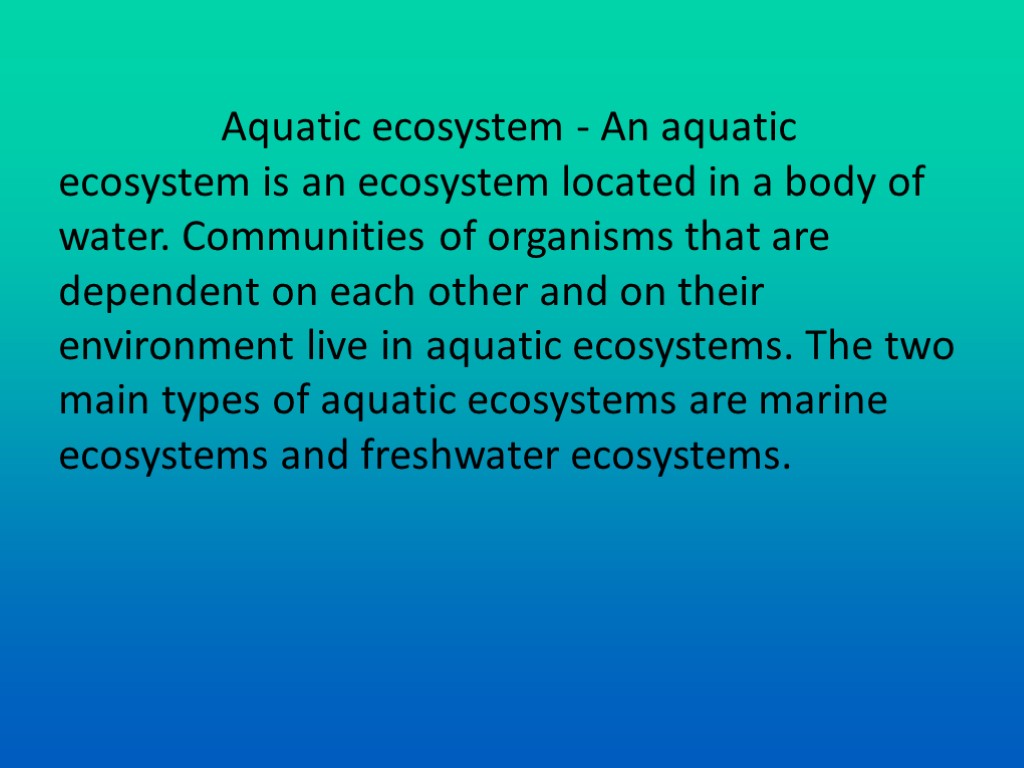 Aquatic ecosystem - An aquatic ecosystem is an ecosystem located in a body of water. Communities of organisms that are dependent on each other and on their environment live in aquatic ecosystems. The two main types of aquatic ecosystems are marine ecosystems and freshwater ecosystems.
Aquatic ecosystem - An aquatic ecosystem is an ecosystem located in a body of water. Communities of organisms that are dependent on each other and on their environment live in aquatic ecosystems. The two main types of aquatic ecosystems are marine ecosystems and freshwater ecosystems.
 Marine - are among the largest of Earth's aquatic ecosystems. They include oceans, salt marsh and intertidal ecology, estuaries and lagoons, mangroves and coral reefs, the deep sea and the sea floor covering two-thirds of the surface of the Earth. They are considered ecosystems because the plant life supports the animal life and vice-versa.
Marine - are among the largest of Earth's aquatic ecosystems. They include oceans, salt marsh and intertidal ecology, estuaries and lagoons, mangroves and coral reefs, the deep sea and the sea floor covering two-thirds of the surface of the Earth. They are considered ecosystems because the plant life supports the animal life and vice-versa.
 Marine ecosystem
Marine ecosystem
 Freshwater ecosystems - include lakes and ponds, rivers, streams and springs, and wetlands. Freshwater habitats can be classified by different factors, including temperature, light penetration, and vegetation. Classified: Lentic: slow-moving water, including pools, ponds, and lakes. Lotic: rapidly-moving water, for example streams and rivers. Wetlands: areas where the soil is saturated or inundated for at least part of the time.
Freshwater ecosystems - include lakes and ponds, rivers, streams and springs, and wetlands. Freshwater habitats can be classified by different factors, including temperature, light penetration, and vegetation. Classified: Lentic: slow-moving water, including pools, ponds, and lakes. Lotic: rapidly-moving water, for example streams and rivers. Wetlands: areas where the soil is saturated or inundated for at least part of the time.
 Freshwater ecosystem
Freshwater ecosystem
 Lentic
Lentic
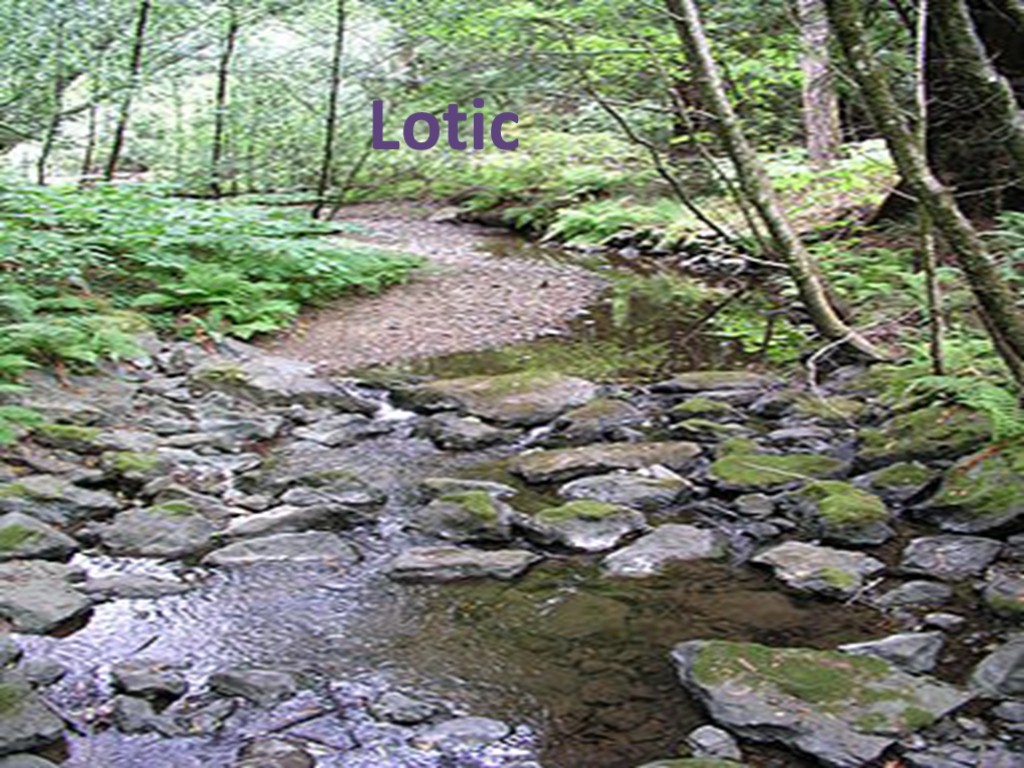 Lotic
Lotic
 Wetland
Wetland
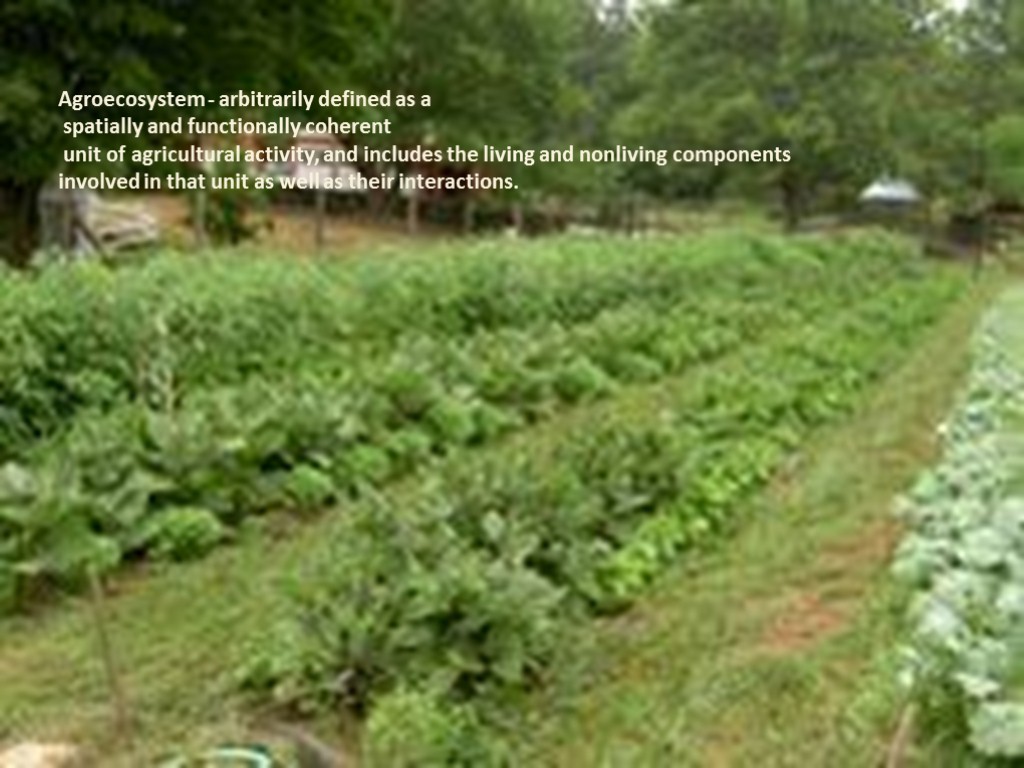 Agroecosystem - arbitrarily defined as a spatially and functionally coherent unit of agricultural activity, and includes the living and nonliving components involved in that unit as well as their interactions.
Agroecosystem - arbitrarily defined as a spatially and functionally coherent unit of agricultural activity, and includes the living and nonliving components involved in that unit as well as their interactions.
 Chaparral
Chaparral
 Coral Reef
Coral Reef
 Desert
Desert
 Rainforest
Rainforest
 Human Ecosystem
Human Ecosystem
 Prairie
Prairie
 Riparian zone
Riparian zone
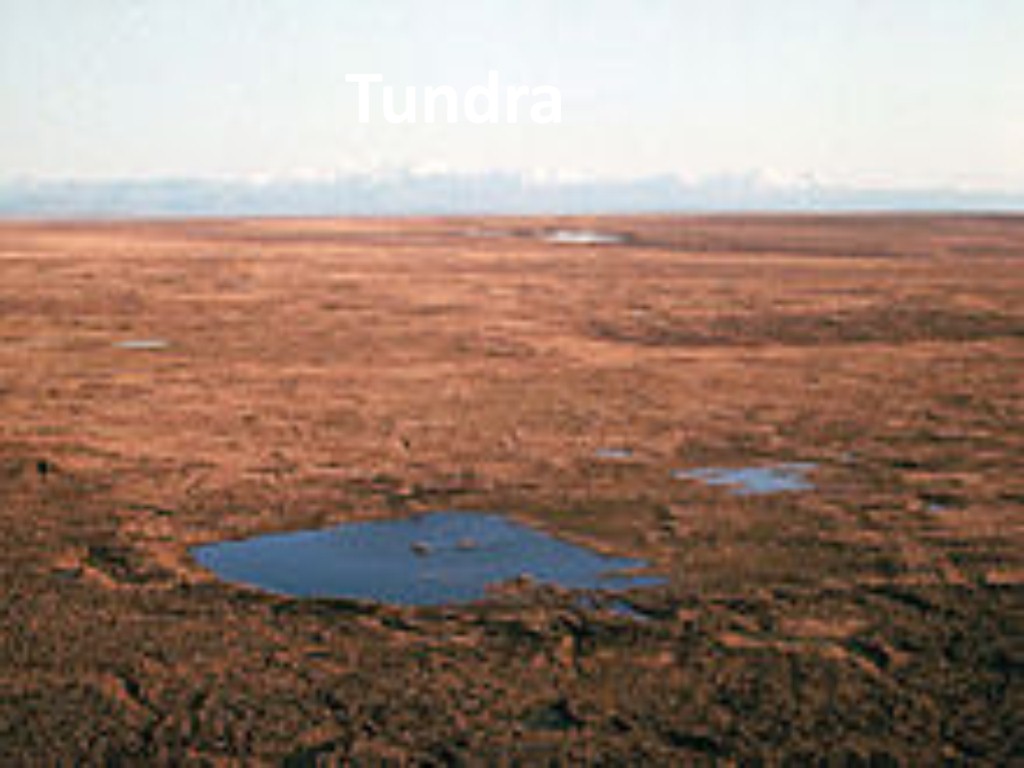 Tundra
Tundra
 Urban
Urban
 Biomes Terrestrial Freshwater Marine
Biomes Terrestrial Freshwater Marine
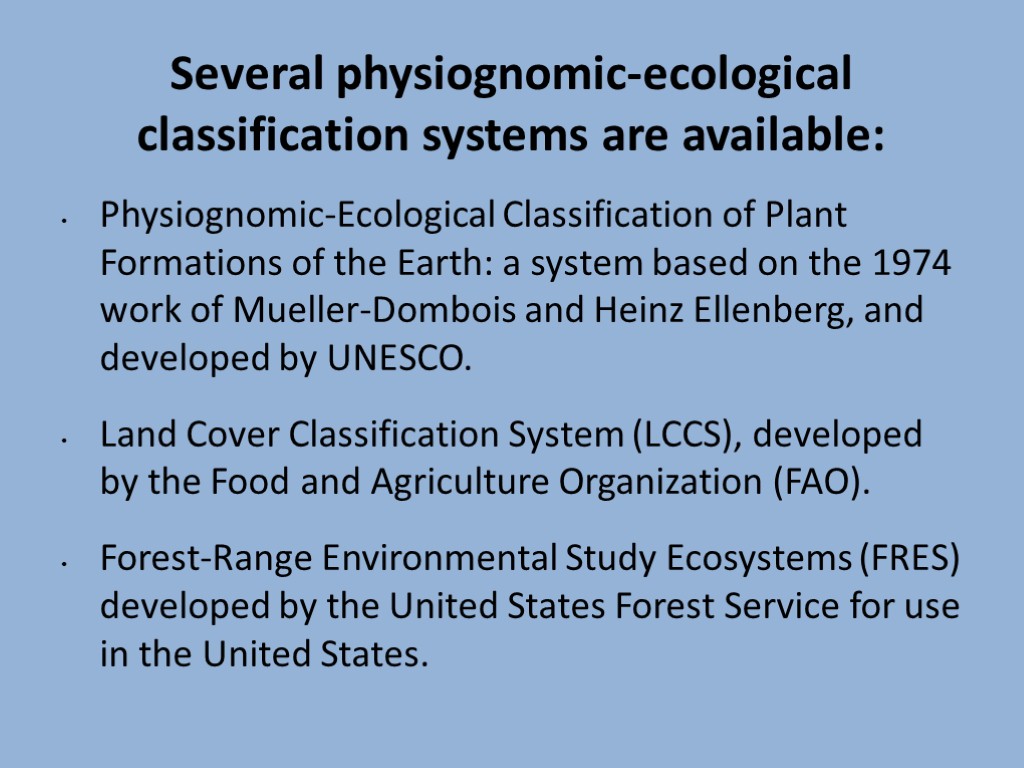 Several physiognomic-ecological classification systems are available: Physiognomic-Ecological Classification of Plant Formations of the Earth: a system based on the 1974 work of Mueller-Dombois and Heinz Ellenberg, and developed by UNESCO. Land Cover Classification System (LCCS), developed by the Food and Agriculture Organization (FAO). Forest-Range Environmental Study Ecosystems (FRES) developed by the United States Forest Service for use in the United States.
Several physiognomic-ecological classification systems are available: Physiognomic-Ecological Classification of Plant Formations of the Earth: a system based on the 1974 work of Mueller-Dombois and Heinz Ellenberg, and developed by UNESCO. Land Cover Classification System (LCCS), developed by the Food and Agriculture Organization (FAO). Forest-Range Environmental Study Ecosystems (FRES) developed by the United States Forest Service for use in the United States.
 Ecosystem services regulating (climate, floods, nutrient balance, water filtration) provisioning (food, medicine, fur) cultural (science, spiritual, ceremonial, recreation, aesthetic) supporting (nutrient cycling, photosynthesis, soil formation).
Ecosystem services regulating (climate, floods, nutrient balance, water filtration) provisioning (food, medicine, fur) cultural (science, spiritual, ceremonial, recreation, aesthetic) supporting (nutrient cycling, photosynthesis, soil formation).
 Thank you for attention
Thank you for attention





















































